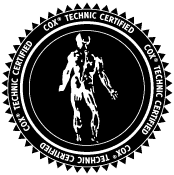What Is the Hamstring?
 The hamstring is actually 3 muscles in one, stretching from the knee to the hip at the back of the thigh, attaching muscle to tendon. The hamstring is meant to stretch and lighten the stress on the back, but if it is tight, it doesn't allow adequate motion in the hip, forcing the lower back to do more motion. Tight hamstrings putting more pressure on an already stressed low back or one that is prone to stress, especially in the case of spondylolisthesis, is not a good situation. Stretching tight hamstrings in Ashburn and Herndon may benefit back pain sufferers, especially those with spondylolisthesis.
The hamstring is actually 3 muscles in one, stretching from the knee to the hip at the back of the thigh, attaching muscle to tendon. The hamstring is meant to stretch and lighten the stress on the back, but if it is tight, it doesn't allow adequate motion in the hip, forcing the lower back to do more motion. Tight hamstrings putting more pressure on an already stressed low back or one that is prone to stress, especially in the case of spondylolisthesis, is not a good situation. Stretching tight hamstrings in Ashburn and Herndon may benefit back pain sufferers, especially those with spondylolisthesis.
Spondylolisthesis and the Hamstring
Spondylolisthesis is a fracture of the pars interarticularis, part of the vertebral bone in the spine. If the hamstring is tight, forcing the low back to do more flexing, the fracture is irritated and may cause pain. Keeping the hamstrings flexible is important in spondylolisthesis' pain control as well as in prevention of spinal pain flare-ups.
Why Worry About Hamstring Flexibility?
The incidence of hamstring tightness in adolescent lumbar disc herniation is high. (1) Tight hamstring syndrome in childhood can be an initial symptom of an associated, more serious disease like higher-grade spondylolisthesis / spondyloptosis, disc herniation and even osteomyelitis or spondylodiscitis. (2)
In one study of bending and motion, it was found that the lumbar spine has a greater contribution to early forward bending. The lumbar spine and hips contributed almost equally to middle forward bending, and the hips had a greater contribution to late forward bending. Two groups were compared, those with a history of low back pain and those without. Hamstring flexibility was strongly correlated to motion in subjects with a history of low back pain, but not in healthy subjects. The authors concluded that hamstring stretching is recommended in patients with low back pain history to bend at the hips sooner. (3)
How to Stretch Hamstrings and Increase Flexibility?
Just how to stretch the hamstrings has been a topic of research and debate for some time. Active vs passive stretching. Proprioceptive neuromuscular facilitation (PNF) technique vs self-stretching or static stretching. For the most part, stretching period gives good results.
- In one study, active stretching is reported to be more time efficient as well as less demanding to produce sustainable effects. (4)
- In another study, hamstring flexibility results of active stretching was better at 4 weeks, then passive stretching results were better after 8 weeks. PNF showed better knee range-of-motion. (5)
- Another study of active stretching vs static stretching vs PNF stretching showed that all three showed improvement in hamstring flexibility, but static stretching showed statistically more improvement over control patients at 4 weeks. (6)
One Hamstring Stretching Method To Try
So what is best? Likely in Ashburn and Herndon, the best is the technique that will keep a patient who needs to stretch the hamstrings stretching! One way that seems to work well is PNF hamstring stretching which requires the contraction of the muscle then the relaxation of the muscle during which stretching is easier and more successful. Three ways of doing PNF hamstring stretching are presented for you to consider if recommended for your condition: PNF with an assistant/towel/alone These are easy to do. First contract the muscle against resistance (towel/assistant/your hands) then relax the muscle and pull the leg toward you. See the full explanation of PNF hamstring stretching at this link.
In Ashburn and Herndon, discuss how hamstring stretching may benefit your lumbar spine condition with your chiropractor at Poulin Chiropractic of Herndon and Ashburn. Contact Poulin Chiropractic of Herndon and Ashburn today.
References
- Zhu Q, Gu R, Yang X, Lin Y, Gao Z, Tanaka Y: Adolescent lumbar disc herniation and hamstring tightness: review of 16 cases. Spine (Phila Pa 1976). 2006 Jul 15;31(16):1810-4.
- Kayser R, Mahlfeld K, Heyde CE, Grasshoff H, Mellerowicz H. Tight hamstring syndrome and extra- or intraspinal diseases in childhood: a multicenter study. Eur Spine J. 2006 Apr;15(4):403-8. Epub 2005 May 24.
- Esola MA, McClure PW, Fitzgerald GK, Siegler S. Analysis of lumbar spine and hip motion during forward bending in subjects with and without a history of low back pain. Spine (Phila Pa 1976). 1996 Jan 1;21(1):71-8.
- Meroni R, Cerri CG, Lanzarini C, Barindelli G, Morte GD, Gessaga V, Cesana GC, De Vito G. Comparison of active stretching technique and static stretching technique on hamstring flexibility. Clin J Sport Med. 2010 Jan;20(1):8-14.
- Fasen JM, O'Connor AM, Schwartz SL, Watson JO, Plastaras CT, Garvan CW, Bulcao C, Johnson SC, Akuthota V. A randomized controlled trial of hamstring stretching: comparison of four techniques. J Strength Cond Res. 2009 Mar;23(2):660-7.
- Davis, Ashby, McCale et al: The effectiveness of 3 stretching techniques on hamstring flexibility using consistent stretching parameters. J Strength Cond Res. 2005 Feb;19(1):27-32.


